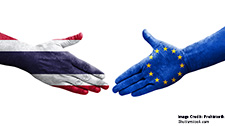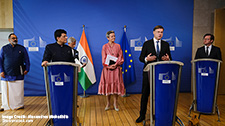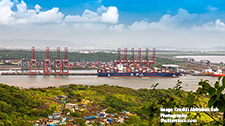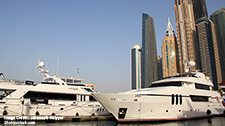India-Middle East-Europe Economic Corridor: Will It Get Subsumed by Its Grand Vision?

Jagannath P. Panda
The recently concluded Group of Twenty (G20) Summit in New Delhi under India’s presidency was, undoubtedly, a crowning moment for India. From providing the G20 with new relevance among the public to pushing for somewhat a concrete development vision for the Global South, the Delhi Summit demonstrated India’s leadership success. Three declarations, however, stood out the most: First, the African Union’s (AU) entry into the G20 was a significant though given outcome even before the summit. Second, the release of the joint declaration was a breakthrough diplomatic achievement for India as the deep global divisions over the war in Ukraine were set to overwhelm the economic and development agenda. Fortunately, that was not to be; and the need to reach consensus and showcase collective strength for tackling evolving, complex challenges won over.
Thirdly, in the same context of achieving global integration, another landmark (and surprise) announcement was the launch of the India-Middle East-Europe Economic Corridor (IMEC). The IMEC was not a part of the G20’s agenda but came about at the sidelines of the Summit. The proposed corridor is an impressive, albeit perhaps an overly ambitious, plan that aims to improve inter-regional integration via the “physical, digital, and financial connectivity” between multiple countries in South Asia, the Gulf, and Europe through transnational multimodal (rail, road, and shipping) routes.
Competing with China’s BRI?
At present, the memorandum of understanding (MoU) on the project has been signed by European Union (EU), France, Germany, India, Italy, Saudi Arabia, UAE, and the US. Although few details are available on the just-released initiatives, questions persist on its viability, particularly in face of China’s own extravagant connectivity plan, the Belt and Road Initiative (BRI). How competitive is the IMEC, and can it measure up to the grand vision it sets forth?
With the US joining as a ‘Guarantor Partner’ of sorts, the IMEC is backed by the G7’s Partnership for Global Infrastructure and Investment (PGII) – a rather new venture (launched in 2022) that aims to narrow the infrastructure gap in developing countries and accelerating global progress on SDGs. It looks to mobilize US$600 billion by 2027 for quality and sustainable infrastructure projects and is widely considered the G7’s counter to the BRI. In addition to this, the fact that China was conspicuously absent at the special event announcing the IMEC – even as other Indo-Pacific stakeholders including Japan attended – has led to immediate comparisons between the two initiatives.
Nevertheless, any comparison between the IMEC mega economic corridor and the BRI strategy are rather premature. For one, the BRI is an established decade-old project with a massive reach and financial clout (as per some estimates, about US$1 trillion have already been spent with plans to invest up to US$3 trillion across Africa, Asia, and Europe). So, any speculations about the IMEC’s future, either as a doomed venture or a legitimate alternative to the BRI seem hasty and distorted at the very least. Additionally, unlike the BRI, the IMEC is the result of ongoing discussions between multiple stakeholder nations, and will be financed through multiple sources, including public-private partnerships.
Additionally, it must be noted that Saudi Arabia, the UAE, and Italy are BRI members; and France and Germany despite establishing their own Indo-Pacific strategies do not share the US’s enthusiasm against China. India does consider China a continuing adversary but has cautiously refrained from directly acknowledging being part of exclusive “anti-China” or even counter-China” domains.
‘A Big Deal’
Still, even as the details about the IMEC are not yet available, the initiative is certainly “a big deal” in that it is set to be a geopolitical move to limit China’s growing footprint both in Europe and in West Asia, albeit in smaller scale and presumably with far less funding. The imperatives laid out in the MoU and Beijing’s expanding footprint in the Middle East clearly indicate that the new corridor is poised to be a competitive narrative to the BRI.
Particularly, the IMEC is poised to contest China’s footprint in the Middle East – a fast-emerging fulcrum of the Indo-Pacific – where the political tailwinds are strongly in China’s favor. Recently, China’s presence in the region has not only strengthened its economic engagements in the region but also provided a strong challenge to the US – the traditional security provider and power broker in the region.
For example, China’s brokering of the Iran-Saudi normalization deal has been a serious game changer: China, which is normally shy of getting into the thick of conflicts as a mediator, has signaled its power one-upmanship strategic intent. That too, with one of the US’s traditional allies. In this sense, the IMEC is part of the US counter to China’s such nascent strategic attempts and marks a cooperative approach to rebuilding the US geopolitical influence in the region. Including Saudi Arabia and the UAE in the plan only emphasizes that their partnerships with China need not be deal-breaking enterprises for the US. Notably, the IMEC also allows for an overland rail route covering Saudi Arabia, Jordan, and Israel, highlighting the potential for normalization between Israel and Saudi Arabia if the project actualizes.
At the same time, as China’s role in West Asia (and Central Asia) has been on ascent, its star is on the descent in Europe, with Italy – the IMEC MOU signatory and the only G7 state that is a member of the BRI – showing signs of opting out of the BRI in March 2024, when its membership comes up for renewal. China’s weaponization of trade (including dominance in critical raw materials that Europe needs for green and digital transition) has created an atmosphere of distrust in Europe.
Germany, which has long been a critical supporter for enhancing business and political ties with China despite the latter’s coercive politics, is now keen to shed optimistic notions in favor of a de-risking approach. Its presence in the IMEC indicates that the country is keen to strengthen its strategic hold in the Indo-Pacific and branch its Asia outlook beyond its traditionally narrow China focus.
In contrast, although France has resisted the pressure of following the US view of China with its China bonhomie, it has also not shied away from any opportunity to boost its strategic interests in the region, even if they do not align in China’s favor. The IMEC is another tool in strengthening such strategic autonomy aspirations, besides the officially stated aims of inclusive and sustainable prosperity.
The headline-grabbing story of the project as a China counter notwithstanding, the IMEC does offer impressive features. Not only will the new corridor achieve a 40% reduction in time and 30% reduction in cost in India-Europe trade, but also act as a stabilizing influence in the region. Importantly, the G7-backed hybrid connectivity initiative should expand the scope of the I2U2 grouping (India, Israel, the US and the UAE).
Beyond this, if completed successfully, the eastern rail corridor connecting India to the Arabian Gulf and the northern shipping corridor connecting the Gulf to Europe will energize inter-regional economic integration and stimulate economic development. It also aims to help facilitate clean energy (hydrogen) export; improve digital connectivity, as well as access to electricity; and strengthen food security and supply chains, among other developmental objectives. Hence, as a major medium of economic integration between the three subcontinents, the IMEC is set to become a “green and digital bridge across continents”.
In this context, beyond being a geopolitical move, the IMEC brings immense direct economic and developmental benefits for the countries involved and the regions at large. In other words, it is not merely a grandiose plan of strongman political leaders, but a practical connectivity initiative capable of offering useful economic solutions that are transparent, based on equitable financing, and rooted in each country’s development models.
Is It Sustainable?
Nonetheless, it is an ambitious initiative that risks getting fizzled due to lack of finances or improper planning. The worst-case scenario would be the IMEC reflecting the fate of the India-Japan-led Asia-Africa Growth Corridor, which at the time created similar buzz as a game-changing project expected to slow the Chinese wheels in Africa but did not reach its potential largely due to lackadaisical implementation efforts and not deep-enough pockets.
Moreover, the failure to implement methodological execution and serious policy coordination could lead to the IMEC getting lost among the several projects backed by the US to counter China’s BRI – the Blue Dot Network and the G7’s Build Back Better world (B3W, launched in 2021) to name a few. Importantly, with the slowdown in global economy, particularly with Europe facing the downturn due to the protracted Ukraine war and the ensuing economic shocks and the US constrained due to abundant such priorities amid President Joe Biden’s mounting domestic troubles, the financial aspect will meet more scrutiny. In essence, the IMEC is an optimistic and timely grand design, which if duly planned and coordinated on its own merit – rather than constantly weighed through the competing lens of China’s BRI – could potentially live up to its promises.
This article was first published in Prospects & Perspectives (No. 53) of The Prospect Foundation in Taiwan on October 2, 2023.
Related Publications
-
ISDP Annual Report 2023
ISDP’s Annual Report for the year 2023. We look back on 2023, a year in which tensions and conflicts captured the strategic space in ISDP’s focus areas, making headlines around […]
-
EU-Thailand FTA Negotiations: IUU Fishing and Human Rights Remain Obstacles
Thailand’s fishing industry, which at its height saw as many as 200,000 migrant workers from neighboring Laos, Myanmar, and Cambodia caught in a brutal system of abuse, withered global criticism […]
-
Trade, Connectivity and Supply Chains in EU-India Relations
In the decade and a half since 2007 when the EU and India first started their FTA negotiations, the world economic order has undergone a sea change. During that period, […]
-
Jagannath Panda: “India’s INSTC Commitment Is Not Reliant on Western Endorsement”
Interview conducted by Ilya Roubanis, Caucasus Watch The International North-South Transport Corridor (INSTC) is a 7,200km mostly overland network stretching from India to Russia, via Azerbaijan and Iran, branching […]
-
Can UAE become an Indo-Pacific Sea Power?
Amidst the intensified race over connectivity in the Indo-Pacific in a competitive infrastructure marketplace, the UAE is positioning itself to play an important role through strategic investments in ports abroad […]




